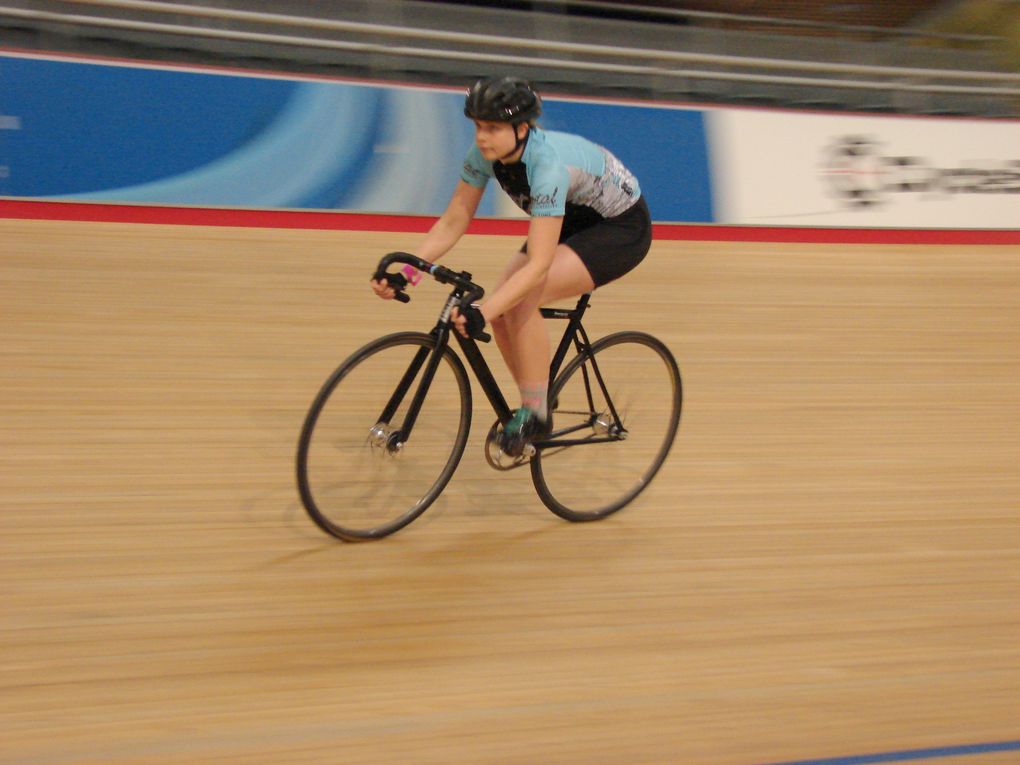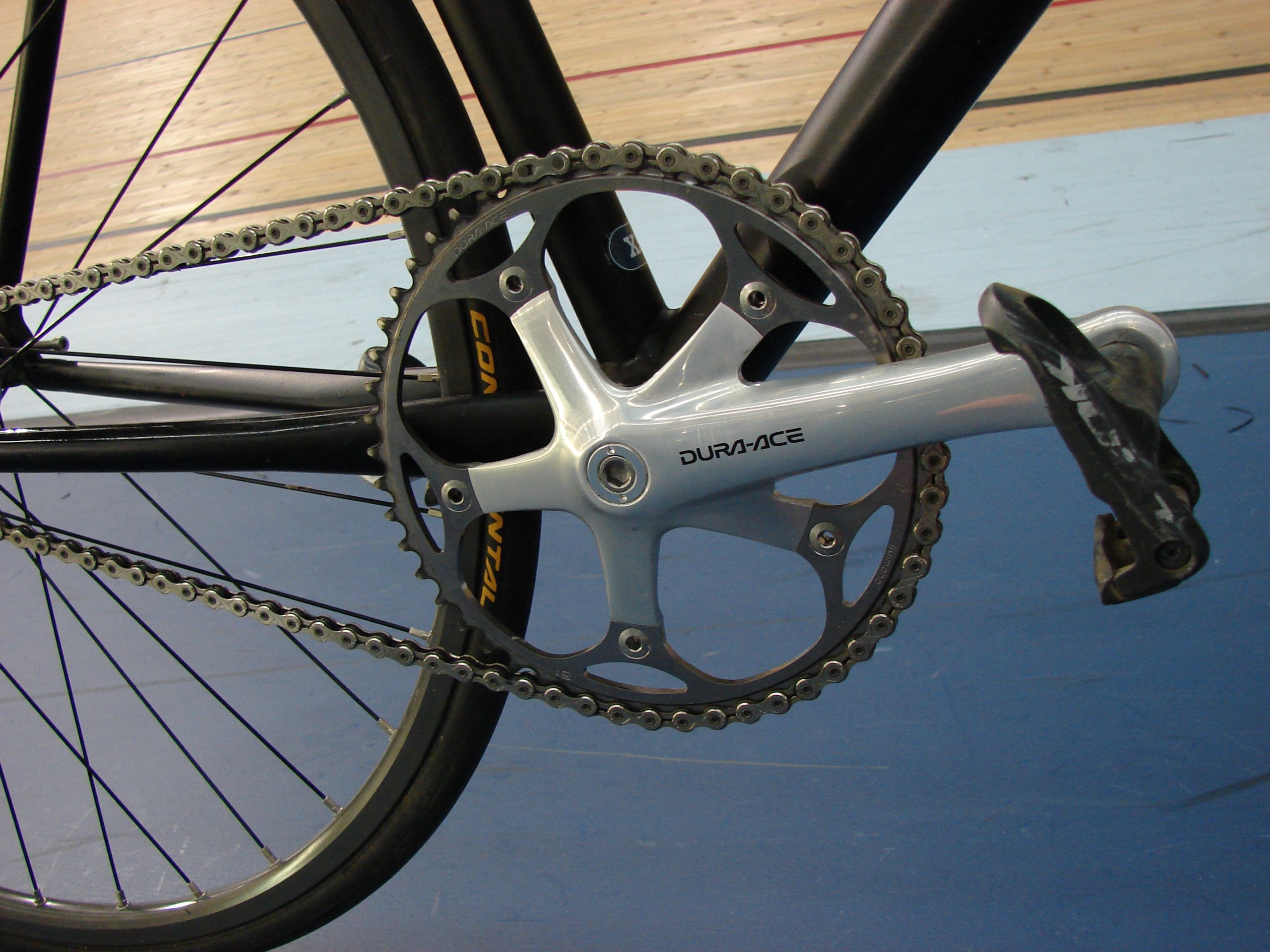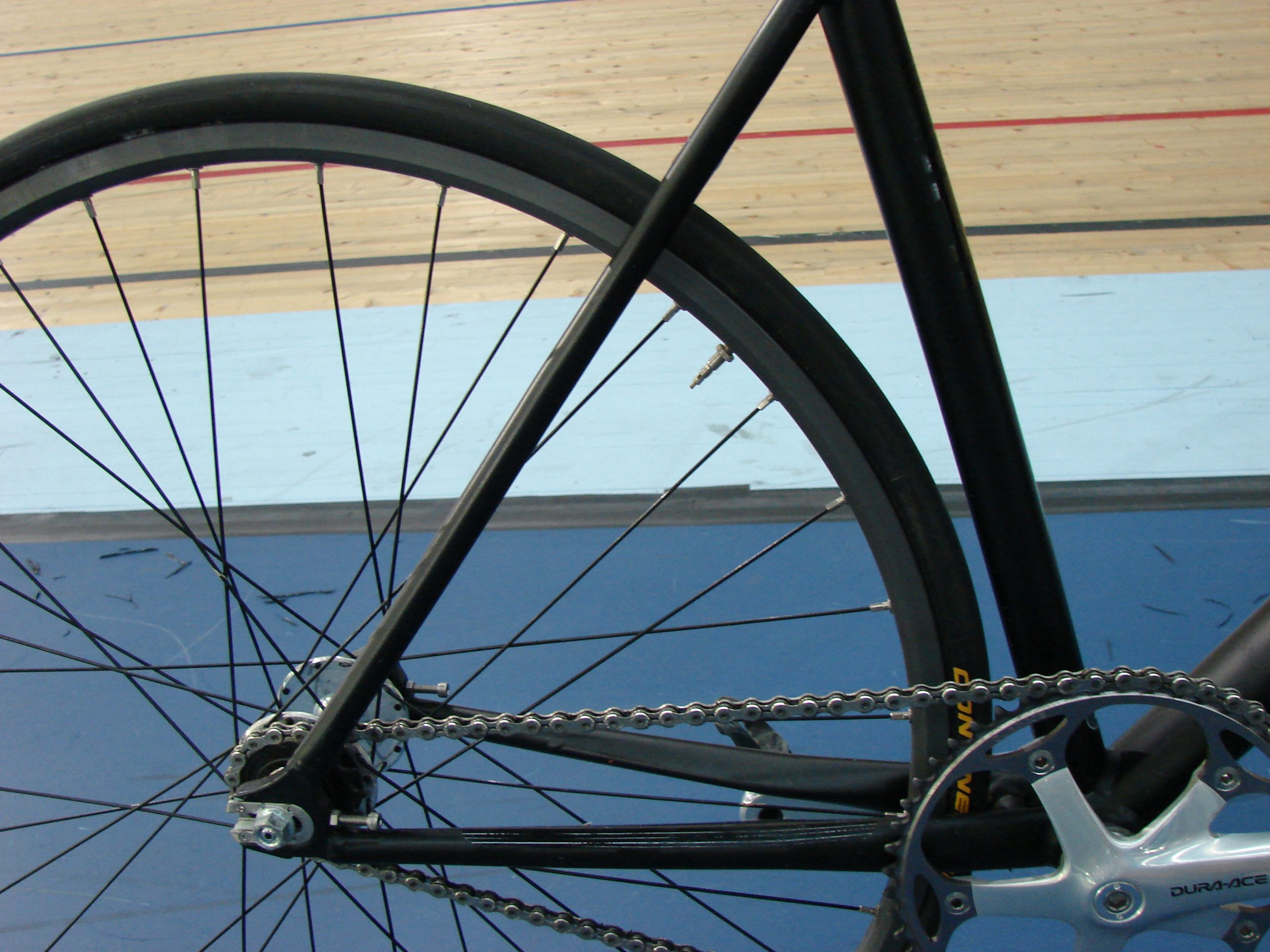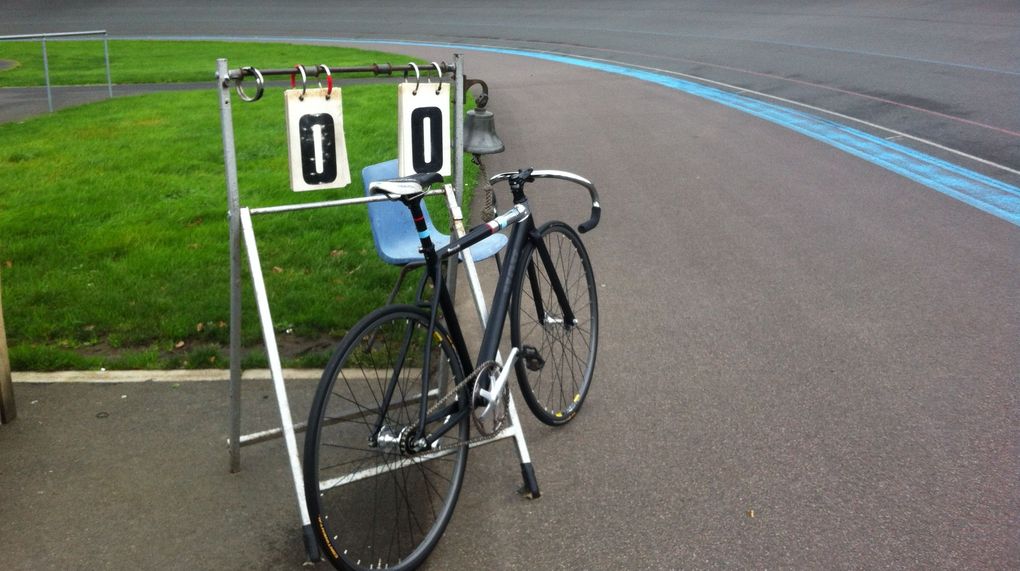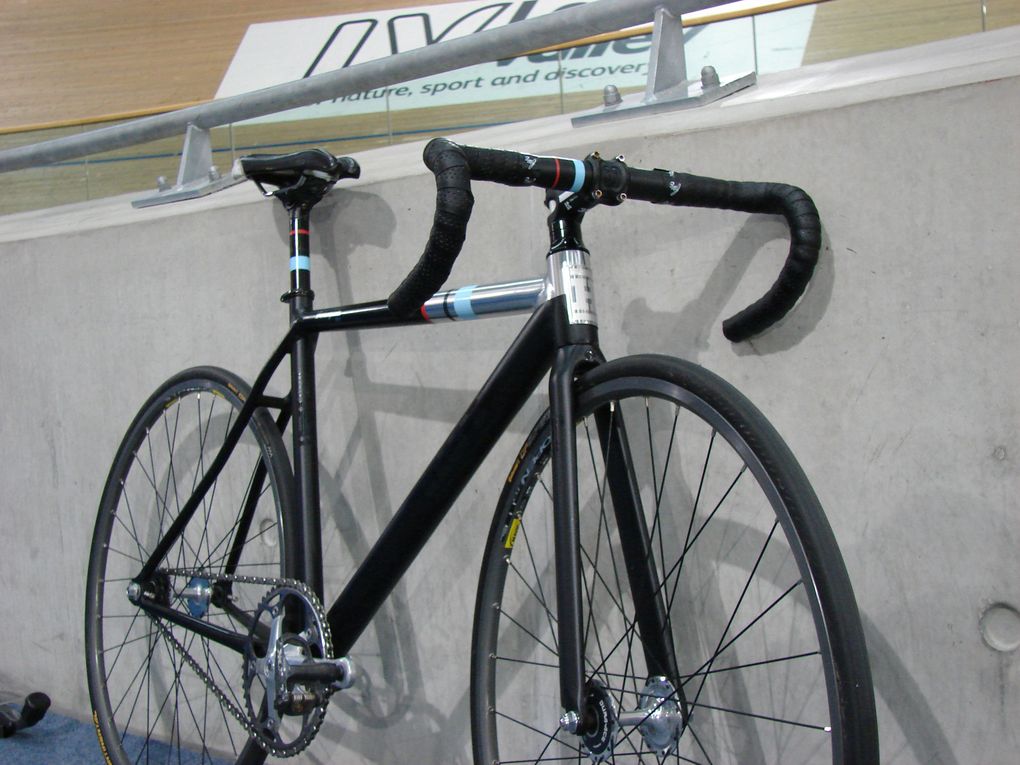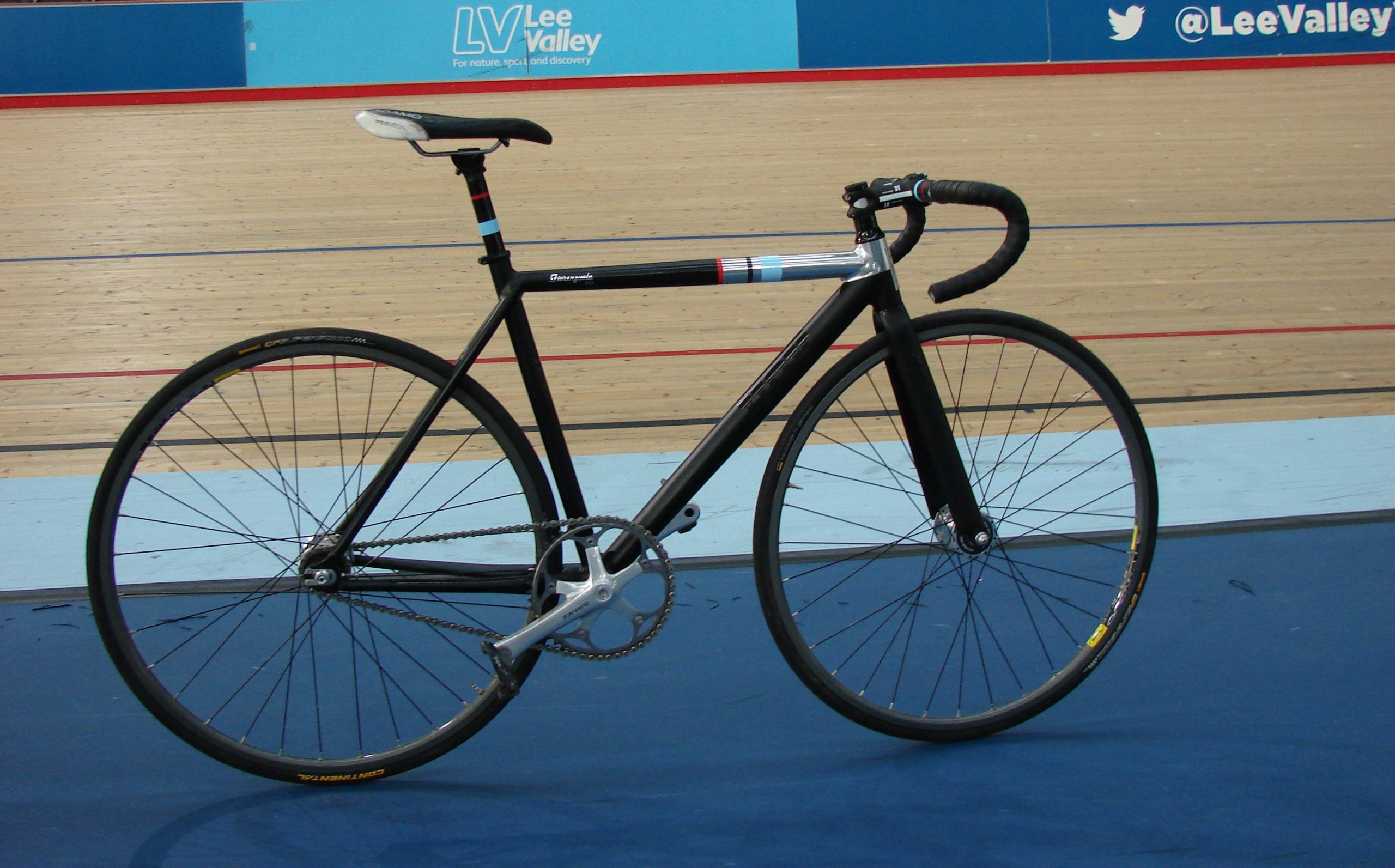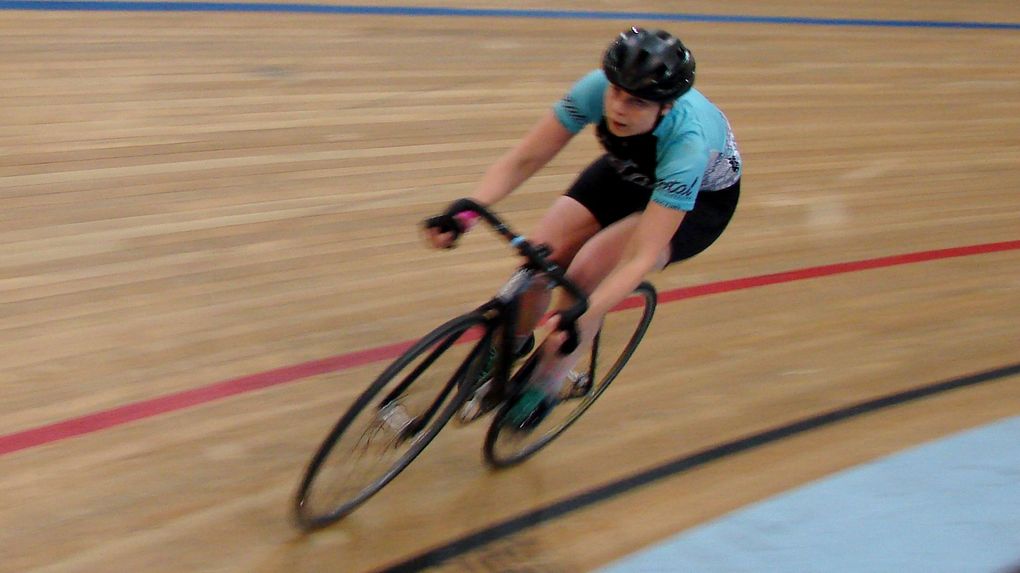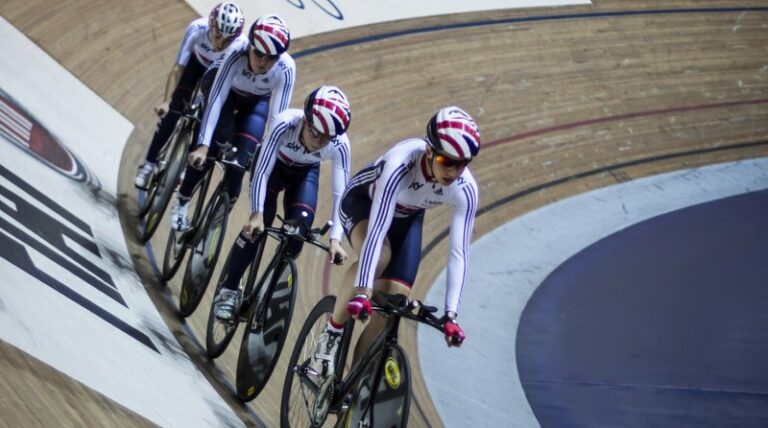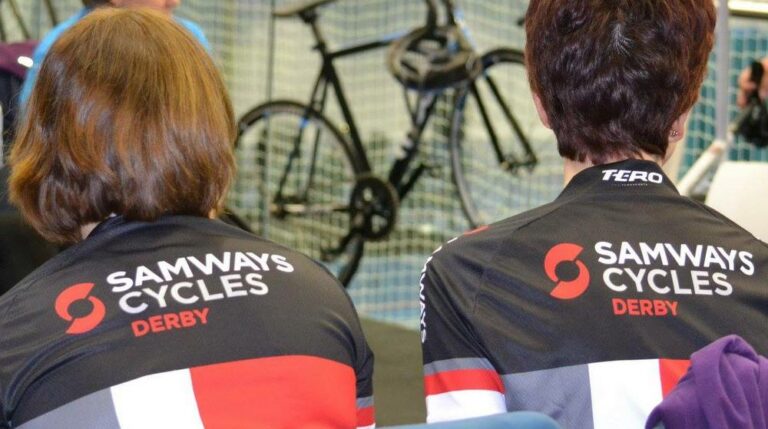Gearing
Firstly – to clear up a little confusion suffered by the man who shared an accreditation session with me (you have to do four at Lee Valley before you’re let loose in SQT’s – Structured Quality Training sessions) and told me rather condescendingly: “It’s a track bike, it doesn’t HAVE gears, love” when I asked if he knew what gear the hire bikes had: a track bike has A gear. Otherwise there would be nothing to propel it forwards. Now I’ve got that off my chest…
The gear you’re pulling is decided by the relationship between the front chain ring and the rear sprocket – and it’s worked out in inches. The higher the gear inch, the bigger the gear. In the case of the Fiorenzuola 002, the front chainring is a 51 and the rear sprocket is a 15. This means it works out at about a 92 inch gear.
Once track riders get to racing they’ll usually have a handy little track bag with a selection of chainrings and sprockets to change out. I’m not quite there yet, and a 92 isn’t the kind of gear I need to be churning for general training sessions. To fix this, I swapped the rear spocket for a 16 which gives me an 86 inch gear. This is actually smaller than I’d like – I could really do with the happy medium – which would be more easily achieved with a 49 or 50 chainring and a selection of sprockets.
It’s a fact universally known that any track rider is going to eventually invest in a range of gearing options, so it isn’t really a blot on the bike.
Where am I going with all of this? A 51 chainring wouldn’t have been my first choice to spec on the bike as it’s either too big, or too small, depending on the sprocket used. It might be the sort of chainring I’d opt for if I was, say… a sprinter.
Most other brands I checked out supply bikes with a chainring anywhere between 48T and 50T and this might have been more adaptable – I note 48T is the size that HOY chose to go for on the more entry level 001 model. All of this said – it’s a fact universally known that any track rider is going to eventually invest in a range of gearing options, so it isn’t really a blot on the bike.
The actual spec of the fore mentioned chainset and sprocket, however – is top draw. Dura Ace sort of top draw. Sir Chris has told us in the past that he swaps Dura Ace onto all his bikes – saying: “You don’t need to [use Dura Ace]– the difference from Ultegra to Dura Ace is minimal – it’s just because I’m a bit of a ponce.” Well, we’re feeling a bit show-off too, and it’s pretty nice to know you’re churning away on the best of the best. The set up is as stiff and as light as you might expect. It just seems a shame to swap on a slightly lower end chainring when I come to up my gear – in fact, I may just have to splash out.
The cranks are 165mm on the XXSmall to Large models, and only go to 170mm on the XLarge – so on my XSmall I had 165mm arms. Shorter cranks are common on track bikes, in order to support greater pedaling efficiency and faster cadence and since many shorter women find sub 170mm cranks on their road bikes more efficient too this can only be helpful.
